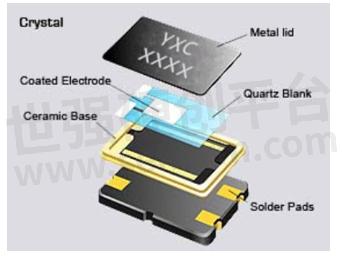Key Parameters for Passive Crystal Oscillator Selection

Crystal oscillators are key components that can generate clock frequency signals and are widely used in central processing units (CPUs) and other digital circuits. All CPU instruction executions rely on clock signals. The higher the clock frequency, the faster the CPU usually runs. Therefore, almost all electronic products containing CPUs contain a clock source. Even if you don't see an external oscillation circuit on some circuit boards, it's because the crystal oscillator has been integrated into the chip, which is usually called an integrated clock source. Crystal oscillators are often regarded as the "heart" of the circuit system. If the "heart" stops working, the function of the entire circuit board may be paralyzed. Therefore, the quality of crystal oscillators has become the primary consideration for many electronic equipment manufacturers when selecting components.
How to judge the quality of crystal oscillators? Some people think that it can be judged by appearance, packaging or logo. However, as an electronic component, the quality of crystal oscillators cannot be distinguished by external features alone. Usually, a "bad" crystal oscillator means that it cannot oscillate normally in the circuit, or the oscillation is unstable. Are these problems caused by quality problems or improper parameter matching? For passive crystal oscillators, understanding their key parameters is particularly important for judging their performance.

Main parameters affecting the performance of passive crystal oscillators
As an important component of the clock circuit, the performance of the passive crystal oscillator directly affects the stability and accuracy of the entire system. The passive crystal oscillator itself does not have an internal oscillation circuit and relies on an external circuit to generate oscillation. Therefore, choosing a suitable crystal oscillator and ensuring that its parameters match the circuit is the key to achieving efficient and stable operation. The following are several main parameters that affect the performance of passive crystal oscillators:
1. Frequency Tolerance
Frequency tolerance indicates the allowable deviation range of the crystal oscillator from the nominal frequency, usually expressed as a percentage or part per million (PPM). A smaller frequency tolerance means that the crystal oscillator can be closer to its nominal frequency when working, ensuring the accuracy and stability of the system. In many high-precision applications, such as communication equipment and timers, low frequency tolerance is the key to ensuring the reliable operation of the system.
For example, the common 32.768kHz crystal oscillator is usually within the range of ±20PPM. When used on occasions with strict frequency requirements, the smaller the frequency tolerance, the better the performance. The frequency tolerance of chip passive crystal oscillators is usually ±10PPM/±20PPM. For plug-in cylindrical crystal oscillators, ±5ppm is a higher level of accuracy among cylindrical crystal oscillators, followed by 10ppm, 20ppm, and 30ppm.
2. Load Capacitance
Load capacitance refers to the capacitance matching value between the passive crystal oscillator and the external circuit, which directly affects the operating frequency of the crystal oscillator. If the load capacitance is not selected properly, the crystal oscillator may not operate at the correct frequency, affecting the stability and accuracy of the oscillation circuit. Common load capacitances for tuning fork crystals are 6pF, 7pF, 9pF, and 12.5pF; common load capacitances for MHZ crystal oscillators are 12PF and 20PF, followed by 8PF, 9PF, 15PF, 18PF, etc. When designing, it is necessary to select the appropriate load capacitance according to the circuit and crystal oscillator parameters.
For precision applications, the load capacitance needs to be accurately matched to ensure the stability of the frequency, especially in the clock circuit, where slight errors in the load capacitance may cause the frequency drift of the system.
3. Equivalent Series Resistance (ESR)
ESR is a parameter that measures the internal energy loss of a passive crystal oscillator, and refers to the internal impedance generated by the crystal when it oscillates. Lower ESR usually means that the crystal oscillator can generate oscillation signals more efficiently while reducing energy loss, thereby improving the startup performance and frequency stability of the circuit.
If the ESR is too high, it may cause the crystal oscillator to be difficult to start or have poor frequency stability. Therefore, the size of the ESR needs to be considered when selecting a passive crystal oscillator, especially for low-power designs, where low-ESR crystal oscillators are preferred.
4. Frequency vs. Temperature Stability
Temperature changes can affect the oscillation frequency of the crystal oscillator. The frequency-temperature characteristic describes the frequency drift of the crystal oscillator at different temperatures. For some industrial or automotive applications, the crystal oscillator is required to maintain high frequency stability under extreme temperature conditions. For example, the operating temperature range of industrial-grade crystal oscillators is usually -40℃ to 85℃, while automotive applications require a wider temperature range, such as -40℃ to 125℃.
Selecting a crystal oscillator with good temperature characteristics can ensure that the device can maintain stable operation in extreme environments.
The performance of a passive crystal oscillator is determined by multiple key parameters. Factors such as frequency tolerance, load capacitance, ESR, and frequency-temperature characteristics jointly affect the performance of the crystal oscillator in the circuit. When selecting and applying a passive crystal oscillator, it is necessary to reasonably match these parameters to ensure that the electronic equipment can operate stably and efficiently for a long time.
- +1 Like
- Add to Favorites
Recommend
- The Difference between Active Crystal Oscillators and Passive Crystal Oscillators
- Does a Passive Crystal Oscillator Have a Direction?
- Solutions for Large Frequency Deviation in Both Active and Passive Crystal Oscillators
- How to Select External Capacitors for Passive Crystal Oscillators?
- How to Prevent the Bad Phenomenon of Crystal Vibration?
- What Is the Difference between Crystal Oscillators and Crystals
- YXC automotive grade resonator 8MHz, Passive Crystal Oscillator 3225 Package for Car Bluetooth Module
- YXC Programmable Differential Oscillator, Frequency 50MHz, 7050 package, LVDS output, applied to SVG
This document is provided by Sekorm Platform for VIP exclusive service. The copyright is owned by Sekorm. Without authorization, any medias, websites or individual are not allowed to reprint. When authorizing the reprint, the link of www.sekorm.com must be indicated.






























































































































































































































































































































































































































































































































































































































































































































































































































































































